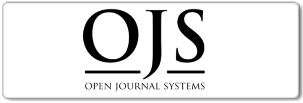IMPLEMENTATION OF K-MEANS CLUSTERING ANALYSIS TO DETERMINE BARRIERS TO ONLINE LEARNING CASE STUDY: SWASTA YAPENDAK TINJOWAN JUNIOR HIGH SCHOOL
DOI:
https://doi.org/10.20884/1.jutif.2022.3.3.189Keywords:
Clustering, Determine Barriers to Online Learning, K-Means, MySql, PHPAbstract
The grouping of online learning barriers to students during the covid-19 pandemic will result in clusters of students with the same characteristics in each cluster. The purpose of this study is to assist schools in determining online learning barriers for students during the covid-19 pandemic, so that with this clustering students with high levels of online learning barriers will get additional face-to-face hours.face-to-face learning so as to create an effective learning process. The method used in this study was a data mining technique, which uses the k-means clustering algorithm. This study uses the k-means clustering algorithm because this algorithm is more effective and efficient in processing large amounts of data, so this algorithm has a high enough accuracy for object size and the k-means algorithm is not affected by the order of objects. Testing the data using Microsoft Excel as a manual test and the PHP programming language and MySQL database. The results of this study were in the form of 2 clusters, C1 (low cluster) as many as 4 students who are hampered during online learning, and C2 (high cluster) as many as 16 students who are not hampered during online learning. The conclusion of this study was using of the k-means clustering algorithm can facilitate the grouping of online learning barriers for students at Swasta Yapendak Tinjowan Junior High School.
Downloads
References
W. A. Prabowo and C. Wiguna, “Sistem Informasi UMKM Bengkel Berbasis Web Menggunakan Metode SCRUM,” J. Media Inform. Budidarma, vol. 5, no. 1, p. 149, 2021, doi: 10.30865/mib.v5i1.2604.
J. A. Dewantara and T. H. Nurgiansah, “Efektivitas Pembelajaran Daring di Masa Pandemi COVID 19 Bagi Mahasiswa Universitas PGRI Yogyakarta,” J. Basicedu, vol. 5, no. 1, pp. 367–375, 2020, doi: 10.31004/basicedu.v5i1.669.
Menteri Pendidikan dan Kebudayaan Indonesia, “Pelaksanaan Kebijakan Pendidikan dalam Masa Darurat Penyebaran Coronavirus Disease(Covid-19),” surat edaran dari kemetrian RI, pp. 1–3, 2020.
A. Tanggu Mara, E. Sediyono, and H. Purnomo, “Penerapan Algoritma K-Nearest Neighbors Pada Analisis Sentimen Metode Pembelajaran Dalam Jaringan (DARING) Di Universitas Kristen Wira Wacana Sumba,” Jointer - J. Informatics Eng., vol. 2, no. 01, pp. 24–31, 2021, doi: 10.53682/jointer.v2i01.30.
A. Rohmah, D. Gustian, F. Sembiring, A. Erfina, and M. Muslih, “ANALISIS PENENTUAN HAMBATAN PEMBELAJARAN DARING DENGAN ALGORITMA K-MEANS,” vol. 4, no. 2, pp. 1–6, 2020.
N. P. Dharshinni, A. H. Sitepu, R. Y. Syuhada, and D. Barasa, “JITE ( Journal of Informatics and Telecommunication Engineering ) Moodle Web-Based Learning Constraints toward Student Learning,” vol. 5, no. July, pp. 132–141, 2021.
S. Kasus and D. Hwi, “K-MEANS CLUSTERING HWI PRODUCTS,” 2019.
H. Haviluddin, S. J. Patandianan, G. M. Putra, N. Puspitasari, and H. S. Pakpahan, “Implementasi Metode K-Means Untuk Pengelompokkan Rekomendasi Tugas Akhir,” Inform. Mulawarman J. Ilm. Ilmu Komput., vol. 16, no. 1, p. 13, 2021, doi: 10.30872/jim.v16i1.5182.
A. Bastian, H. Sujadi, and G. Febrianto, “Penerapan Algoritma K-Means Clustering Analysis Pada Penyakit Menular Manusia (Studi Kasus Kabupaten Majalengka),” no. 1, pp. 26–32, 2018.
R. A. Indraputra and R. Fitriana, “K-Means Clustering Data COVID-19,” vol. 10, no. 3, pp. 275–282, 2020.
A. Maulana and A. A. Fajrin, “Penerapan Data Mining Untuk Analisis Pola Pembelian Konsumen Dengan Algoritma Fp-Growth Pada Data Transaksi Penjualan Spare Part Motor,” Klik - Kumpul. J. Ilmu Komput., vol. 5, no. 1, p. 27, 2018, doi: 10.20527/klik.v5i1.100.
A. A. Argasah and D. Gustian, “DATA MINING ANALYSIS TO DETERMINE EMPLOYEE SALARIES ACCORDING TO NEEDS BASED ON THE K-MEDOIDS CLUSTERING ALGORITHM ANALISIS DATA MINING UNTUK MENENTUKAN GAJI KARYAWAN SESUAI PENILAIAN KEMAMPUAN MENGGUNAKAN ALGORITMA K-MEDOIDS,” vol. 3, no. 1, 2022.
G. Gustientiedina, M. H. Adiya, and Y. Desnelita, “Penerapan Algoritma K-Means Untuk Clustering Data Obat-Obatan,” J. Nas. Teknol. dan Sist. Inf., vol. 5, no. 1, pp. 17–24, 2019, doi: 10.25077/teknosi.v5i1.2019.17-24.
E. Irfiani and S. S. Rani, “Algoritma K-Means Clustering untuk Menentukan Nilai Gizi Balita,” J. Sist. dan Teknol. Inf., vol. 6, no. 4, p. 161, 2018, doi: 10.26418/justin.v6i4.29024.
E. Rouza, T. Informatika, F. I. Komputer, and U. P. Pengaraian, “Identifikasi dan Klasifikasi UMKM di Kabupaten Rokan Hulu Menggunakan Metode K-Means,” J. Ilm. Univ. Pengaraian, vol. 7, no. 01, pp. 32–40, 2021.
Z. Nabila, “Analisis Data Mining Untuk Clustering Kasus Covid-19,” J. Teknol. dan Sist. Inf., vol. 2, no. 2, pp. 100–108, 2021.



























